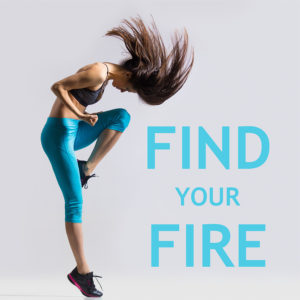Table of Contents
Are you stuck in a career that doesn’t inspire you? Or a relationship that doesn’t excite you? Or a lifestyle that doesn’t fulfill you?
Of the many excuses and issues for this complacency, one problem that surfaces the most is lack of motivation. This post is all about hacking motivation with nootropics.
Because to make matters even worse – lack of motivation to change things that could make your life better often end up making you feel guilty and depressed.
And if left unchecked, a slow but steady spiral into long-term guilt, poor self-esteem and ongoing depression.
So what can you do to boost motivation? And where does that energy come from? That’s what we’re going to explore in this post.
We each have a limited amount of time on this planet. And no matter what stage you are in life. Realize this body will not live forever. It’s time to take back control. And learn how to change up the things you can change to create the life that you want to live.
This is where nootropics may be able to step in to boost brain function. And providing the fuel you need to steer you on a new path toward the things you want to achieve.
The Neuroscience of Motivation
Dopamine and Motivation
Researchers have long known that the neurotransmitter dopamine is involved in pleasure and reward. More dopamine in your brain results in feelings of greater pleasure. And the presence of dopamine in your brain push you to seek this ‘reward’ of pleasure.
But researchers have recently discovered that dopamine also regulates motivation.
Dopamine provides the initiative and perseverance
needed to go after what is important to you.
In 2012, a team at Universitat Jaume I of Castellón changed the thinking and prevailing theory on dopamine. Mercè Correa said, “It was believed that dopamine regulated pleasure and reward and that we release it when we obtain something that satisfies us.
But in fact, the latest scientific evidence shows that this neurotransmitter acts before that. It actually encourages us to act. In other words, dopamine is released in order to achieve something good or to avoid something evil.”[i]
Dopamine levels vary by individual. Some people are more persistent than others when going after goals. Which you’ve likely noticed in the people around you when it comes to athletics, school and work.
Those with higher dopamine levels get more done.
Dopamine helps you to maintain the level of activity needed for what you intend. Whether it’s positive or negative. Depending on what you’re after. The goal to be a good student, or to abuse drugs.
High levels of dopamine could also explain the behavior of sensation-seekers because they are motivated to act. You see this in extreme sports. Or wildly successful musical performances.
Correa went on to say, “Depressed people do not feel like doing anything and that’s because of low dopamine levels”.
This lack of energy and motivation is also related to several debilitating health problems. Often associated with mental fatigue. Diseases like Parkinson’s, multiple sclerosis and fibromyalgia.
Slacker or Go-Getter
Another study by a team at Vanderbilt University used a PET scan to map the brains of go-getters and slackers. And they found that those willing to work for rewards had higher levels of dopamine in the two areas of the brain known to be involved in motivation and reward (striatum and ventromedial prefrontal cortex).
On the other hand, slackers had higher dopamine levels in an area of the brain called the anterior insula. This area is involved in emotion and risk perception.
This last observation came as a complete surprise to researchers. Because more dopamine in the insula is associated with a reduced desire to work. Even if it means earning less money.[ii]
Glutamate AMPA-Receptors and Motivation
 Turns out that dopamine is not the only neurotransmitter involved in motivation. In 2014, researchers discovered that glutamate neurons in a specific region of your brain (dorsal raphe nucleus) activate dopamine neurons in the dopamine-reward pathway.
Turns out that dopamine is not the only neurotransmitter involved in motivation. In 2014, researchers discovered that glutamate neurons in a specific region of your brain (dorsal raphe nucleus) activate dopamine neurons in the dopamine-reward pathway.
Glutamate receptors are associated with neural communication, memory formation and learning. When glutamate AMPA-receptors in this area of the brain (dorsal raphe nucleus) are stimulated. It ends up activating the dopamine reward system.[iii]
The researchers followed this pathway all the way through using special tracers and labeling compounds.
The reward (or motivation) pathway starts with stimulation of glutamate AMPA-receptors that connect to dopamine neurons. Which in turn follows the pathway to the nucleus accumbens. The brain structure linked to motivation, pleasure and reward.
The Motivation Missing Link in Nootropics
Common wisdom in nootropic circles (so far) advise us to boost dopamine to hack motivation. It is true that as dopamine levels rise in the nucleus accumbens (reward pathway), motivation, pleasure and reward are all affected.
But this same common wisdom would have you believe that if you boost overall dopamine levels in your brain, you’ll increase motivation. And it’s just not true.
In fact, if you increase dopamine levels too much, excess dopamine converts to norepinephrine. You get irritable and can’t sleep.
The missing link in this dopamine → reward → motivation pathway are glutamate AMPA-receptors.
Rather than boosting overall dopamine levels and hoping for the best . We need to encourage stimulation of glutamate AMPA-receptors to in turn, fire up dopamine neurons. And send dopamine on its way to the nucleus accumbens.
Best Nootropics for Motivation
We know that dopamine is critical to motivation. In the lab, researchers have demonstrated that without enough dopamine, rats starve themselves to death. Despite having access to food.[iv]
But in our world it’s doubtful that you have problems with motivation to eat. Or drag yourself out of bed in the morning. So basic dopamine levels are likely not an issue.
But what about changing course in an unfulfilling career? Or getting started on that book you want to write? Or plowing through boring and tedious work that’s just part of the job?
To successfully tweak and boost motivation, you need to address the efficiency of the dopamine – motivation pathway. And this is where many of the racetam nootropics come to the rescue.
Here’s a brief list of the most potent nootropics that we’ve discovered so far that will boost motivation. First on this list is ensuring we have enough dopamine available because it’s an integral part of the dopamine – motivation system. The rest of this list of nootropics are supplements that can influence your glutamate AMPA-receptors. And modulate the effectiveness of the main neurotransmitters that affect the motivation pathway in your brain.
L-Tyrosine
- L-Tyrosine – Your brain converts L-Tyrosine to L-DOPA which then produces the neurotransmitter dopamine. The unused dopamine is then further converted into the neurotransmitters norepinephrine (noradrenaline) and epinephrine (adrenaline). This triad of neurotransmitters are collectively referred to as “catecholamines”. L-Tyrosine enhances working memory and executive function in the prefrontal cortex. It helps with creative flow states, is fuel for inspiration, motivation, an extra boost in cognitive function like flexibility, and the kind of “convergent thinking” you do in multiple choice exams.
Aniracetam
- Aniracetam – This member of the racetam-family of nootropics is very well known for helping anxiety and depression. And one of my favorites. This fat-soluble ampakine nootropic affects acetylcholine levels in the brain. It activates D2 and D3 dopamine And Aniracetam modulates AMPA receptors.[v] Leading to better cognition, memory and motivation.
Iodine
- Iodine – This essential trace element combines with tyrosine to form thyroid hormones T4 and T3. Thyroid hormones affect every cell in your brain and body. Within your brain, T4 is converted to T3 by selenium which then affects gene expression controlling metabolism within cells. And activates dopamine, norepinephrine and epinephrine.[vi]
It’s highly unlikely that you’ll see Iodine on any nootropic list to boost motivation. But a malfunctioning thyroid which is often caused by not enough iodine results in poor cognition, difficulty learning, problems with recall, depression, anxiety and certainly a lack of motivation.
Nefiracetam
- Nefiracetam – This fat-soluble racetam nootropic is structurally similar to Aniracetam. Nefiracetam increases the amount of time calcium channels in neurons remain open. Enhancing signaling in the pathway critical for long-term potentiation and forming long-term memories. Nefiracetam also potentiates protein kinase C alpha (PKCα) which is involved in long-term potentiation (LTP).[vii] PKCα is dependent on glutamate signaling. And Nefiracetam activates Ca2+/calmodulin-dependent protein kinase II (CaMKII) which is critical in memory formation.[viii] Again dependent on glutamate signaling. Remember, glutamate signaling fires dopamine neurons which leads to a boost in motivation.
Noopept
- Noopept – This peptide-derived nootropic related to the racetam-family, Noopept increases BDNF, stimulates dopamine, nicotinic and serotonin receptors.[ix] Boosting energy, cognition, memory, logical thinking, mood and motivation. Noopept also boosts Alpha and Beta brain wave You become calmer and more creative. It’s easier to go into a flow state. And you are prone to making innovative and resourceful decisions.
Oxiracetam
- Oxiracetam – This water-soluble ampakine nootropic in the racetam-class of compounds modulates AMPA receptors.[x] Oxiracetam increases acetylcholine And boosts ATP synthesis in brain cells. Oxiracetam significantly improves cognition, memory, sensory perception, reflexes and motivation.
Phenylpiracetam
- Phenylpiracetam – This water-soluble nootropic in the racetam-class of compounds is known for its stimulatory effects. It increases the density of acetylcholine (ACh), NMDA, GABA and dopamine receptors in the brain.[xi] More receptors mean more binding sites for neurotransmitters that affect memory formation, cognition, sleep, mood and motivation. Similar to Noopept, Phenylpiracetam has been shown in clinical studies to affect Alpha and Beta brain waves. And like Ritalin or Adderall, this nootropic increases the effectiveness of dopamine in your brain. Increasing alertness, decision-making capability, cognition and motivation.
Piracetam
- Piracetam – The first racetam ever developed, this nootropic modulates AMPA and NMDA receptors.[xii] And boosts the flow of acetylcholine (ACh), sensitivity and density of ACh receptors in your brain. Piracetam also boosts cerebral blood flow. Delivering more oxygen and nutrients to neurons. Improving neural signaling, cognition, memory, focus and motivation.
Pramiracetam
- Pramiracetam – A derivative of and more potent than Piracetam, Pramiracetam stimulates choline uptake in your brain. And has a profound effect on the synthesis of the neurotransmitter acetylcholine (ACh).[xiii] Boosting energy levels, providing focused stimulation for your brain energy for better mental drive and motivation.
Resveratrol
- Resveratrol – Resveratrol is a polyphenol that some plants produce in response to stress, such as injury or fungal infection. Recent research shows this polyphenol works like an ampakine nootropic in the brain. Resveratrol is an inhibitor of enzyme PDE4 (Phosphodiesterase-4).[xiv] Studies demonstrate that when you inhibit PDE4, you raise levels of cAMP in the brain. cAMP-dependent pathways in the brain activate AMPK (AMP-activated protein kinase).Inhibiting PDE4 and boosting cAMP also makes the effect of normal dopamine production more effective. Boosting processes in this stream of chemical pathways in the brain increases learning, memory and motivation.
Rhodiola Rosea
- Rhodiola Rosea – In Russia, Rhodiola Rosea is widely used as a remedy for fatigue, poor concentration, and decreased memory. It’s also believed to make workers more productive. Research shows Rhodiola can increase attention to detail-oriented tasks by improving concentration over a prolonged period. The ideal study nootropic. Rhodiola Rosea stimulates your nervous system to fight fatigue that stifles mental clarity. And studies show it even saves injured neurons. And encourages the growth and development of brain cells (neurogenesis).[xv]Any kind of fatigue you experience – regardless of source – Rhodiola Rosea is like your “magic bullet”. Mood, energy, stamina, concentration and motivation can all increase with a dose of this herb.
Sulbutiamine
- Sulbutiamine – Synthesized in the lab from Vitamin B1 (thiamine), Sulbutiamine is another favorite of mine because it boosts memory, motivation and is a heck of an antidepressant. Thiamine is essential for producing the neurotransmitter acetylcholine (ACh)[xvi]. ACh is used to relay messages between neurons in your brain. And is critical for cognition, learning, memory and motivation.
Final Notes on Motivation
If you’ve ever felt mentally drained after writing an exam, an intense study session, a misunderstanding with your partner, or working out a business problem – select 2 – 3 nootropics from the list above for your nootropic stack.
Or save some time and money and get a bottle of Mind Lab Pro® which contains an effective dose of N-Acetyl L-Tyrosine to raise dopamine levels in your brain. As well as Rhodiola Rosea which is widely used as a remedy for a lack of motivation, fatigue, poor concentration, and decreased memory.
And if a lack of energy is holding you back, try a bottle of Performance Lab® Energy which helps your brain produce the fuel it needs for better motivation.
Energy and motivation go hand-in-hand.
When I’m energized, it usually translates into motivation to get things done. When energy stores are depleted in my brain and body, I’m burned out and nothing much is going to happen.
Mental fatigue has a variety of causes. Depleted neurotransmitters can cause fatigue as well as a host of other issues. A lack of Adenosine Triphosphate (ATP) which is the energy source for brain cells is another cause of mental fatigue. And leads to neurodegenerative disease.
Hormones that are out of balance can cause fatigue. And poor cerebral circulation which provides oxygen and nutrients to brain cells can result in fatigue.
The amount of available mental energy in your brain has a direct influence on your cognitive performance.
So now that you know how the motivation pathway works in your brain. Add two or three of the natural nootropics suggested in this post. Or just get some Mind Lab Pro® and Performance Lab® Energy. And instead of feeling guilty for being a slacker, join the go-getters who improve cognitive function and are living life to the fullest.








Join The Discussion - 134 comments
Robo
May 7, 2025
Hi David,
Thanks so much for your amazing content and the depth you bring to these topics — it’s been incredibly helpful and inspiring on my journey to better understand and manage my brain.
Quick question: why don’t you ever mention L-Glutamine as a potential glutamate agonist/modulator? I’ve found it can be surprisingly effective for some people as part of a broader stack, especially in addressing focus and energy.
Also, I’d love to hear your thoughts on the most crucial approach to neurohacking ADHD-related executive dysfunction. Personally, I’ve been experimenting with racetams, dopamine and norepinephrine cofactors, and trying to figure out how to modulate or enhance AMPA/glutamate activity. Do you have any favorite pathways to target, or any substances you’ve found particularly effective in this context which may improve it the most?
Caffeine helps me to some extent, but tends to trigger jitters, anxiety, and fight-or-flight responses. Ritalin has been the most effective smart drug I’ve tried so far — it clears brain fog, boosts executive function, improves motivation and focus, and really helps me shift from overthinking into action. However, when it wears off, I often experience uncomfortable chest pressure, which I suspect might be a rebound anxiety response. That’s why I limit it to no more than two days a week.
Modafinil, on the other hand, makes me feel overstimulated and mentally scattered — I’ll probably give it another shot in a different setting, but so far no NZT-like miracles there.
I deal regularly with the usual ADHD symptoms: nervousness, mental fragmentation, distractibility, and a general fight-or-flight state. Stimulants help the most, though AMPA-modulating compounds or certain anxiolytics seem to offer some relief through alternative mechanisms.
I’ve been fully immersed in experimenting with food choices, supplements, nootropics, and smart drugs, because my symptoms were severe enough to push me toward finding a real diagnosis and solution. The process is gradually improving, and I believe I’m getting closer to fully managing the ADHD + executive dysfunction mix this year.
If you have any advice, thoughts, or directions I should look into — I’d truly appreciate it.
Thanks again for your work — your content really makes a difference!
David Tomen
May 9, 2025
Robo, go to this article on memory: https://nootropicsexpert.com/best-nootropics-for-learning-and-memory/ and scroll down to the section called “Long-Term memory”. I talk about glutamate and signaling in that section. Let me know if that helps.
Mostafa
August 29, 2024
Hi, thank you for your article, as i understood, increasing dopamine cant be enough and we need ampakines supplement too, is that correct? Righ now iam taking saffron and 500mg tyrosine but i dont want to take any chemicals, and i found out the only natural ampakine is resveratrol. But i found that it can cause harm too, is there any natural ampakines, could you plz list all natural ampakines??
Ps: While resveratrol has fewer potential side effects than potential benefits, some studies showTrusted Source that it may behave as a pro-oxidizing agent in the body.
This means that, rather than consistently work to slow or prevent cell damage that free radicals cause, resveratrol may exhibit pro-oxidant properties, leading to cellular DNA damage and oxidative stress.
David Tomen
August 29, 2024
Mostafa, “Medical News Today” is NOT a trusted source. They hire freelance copywriters for those article. The only “trusted source” are peer-reviewed clinical studies. If you use Resveratrol at the recommended dose it is safe and does NOT work as a “pro-oxidant”.
Mostafa
August 29, 2024
Thank you for your answer, is there any natural ampakines besides resveratrol and berberine?
David Tomen
August 30, 2024
The only others I know of are any of the racetams. They are not technically “natural” but are derivatives of GABA.
Patricia Volkova
July 11, 2024
Hello David,,
I suffer from psychosis, mania and depression and am on Amisulpride (antipsychotic) and Lithium.
My biggest problem is lack of motivation, energy and vision (I can’t read well).
Many nootropics have the risk to stimulate dopamine too much and I can’t take them.
I take B vitamins incl B12. And more vitamins and minerals.
What gets better is that don’t feel anxiety and depression anymore.
Do you have a suggestion how I get more motivated without becoming manic os psychotic?
Beste Regards, Patricia
David Tomen
July 11, 2024
Patricia, I’m surprised that you are using those two meds together because they are highly contraindicated (https://www.drugs.com/drug-interactions/amisulpride-with-lithium-4134-0-1477). That could be affecting your motivation levels.
The thing is motivation depends on the dopamine/reward/motivation pathway. You need dopamine for motivation. So, I can’t think of anything to recommend as long as you are using amisulpride.
Rusty
April 4, 2024
Hi David,
I have had Parkinson’s for several years. I am now 62. I have in my arsenal to help with fatigue, cognitive, and other Issues related to the disease the following:
Vinpocetine, L-Tyrosine, Mag Glycinate, Mag L-Threonate, Benfotiamine, Uridine, Alpha-GPC, Aniracetam, Huperzine-A, MTHF, NMN, Noopept, NADH, Rhodiola Rosea,Lion’s Mane, Vitamin D3, CoQ10, Black Seed Oil, Cod Liver Oil. I am trying to find the right combinations and when to take. Also I read that coffee offsets L-Tyrosine. Any suggestions may point me in the right direction. Learning so much from you, Thank you!
David Tomen
April 8, 2024
Rusty, I include recommended dosages and timing during the day in each one of my individual supplement reviews. That is where you’ll find that information.
m
February 19, 2024
FWIW DL-Phenylalanine has helped with my motivation. Any idea why?
David Tomen
February 22, 2024
Because it increases dopamine in your brain. And the dopamine pathway is involved in reward and motivation.
Wolfy
March 22, 2023
Hi, David.
Hope you’re doing well, and thanks for writing this treasure of an article. I took the Braverman test after reading a comment on your article, and from the result and the nootropics listed in here.
I chose 3 of them with balancing effect in mind, so I don’t screw up my levels of dopamine and serotonin, GABA etc.
1- L-Tyrosine (I will need 1000 mg)
2- Aniracetam (not sure about dosage)
3- Rhodiola Rosea (100 mg)
4- Choline (the test says GPC, but Citocholine has better research behind it with better effects)
I am hoping that they’ll properly boost my Dopamine, GABA, Serotonin and Acetylcholine levels with proper balance. Please let me know if I chose correctly to fight against ADD and low motivation. Pharmaceuticals aren’t for me.
Thank you
David Tomen
March 22, 2023
Wolfy, it is L-Tyrosine 500 mg twice per day, Citicoline 300 mg twice per day, and ALCAR 500 mg twice per day.
Aniracetam is optional and if you decide to use it then 750 mg twice per day.
Rhodiola Rosea acts like an MAOI so should boost the efficiency of the L-Tyrosine you are using to increase dopamine.
You need PharmaGABA 300 mg before bed to boost GABA. And L-Tryptophan 500 mg before bed to boost serotonin.
Wolfy
March 27, 2023
Thank you for the reply, David.
I guess it’s time to go shopping.